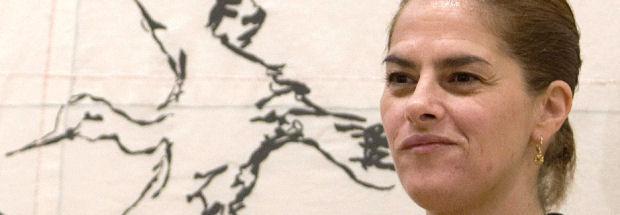Tracey Emin: drawing on the art of the past
Tracey Emin, famed for art installations featuring tents and an unmade beds, has been made professor of drawing at the Royal Academy. But do modern artists need to be able to draw?

Emin becomes the first-ever female professor at the academy alongside Fiona Rae, whose appointment as painting professor was also announced.
In a statement, the artist said: “I’m thrilled. I’m really excited to be teaching again after so many years, and I hope that I can add something constructive to the Royal Academy Schools.”
Under the laws of the RA, which was established in 1776 to promote the visual arts in the UK, Emin will be required “to deliver annually a course of lectures, or conduct seminars, adapted to the arts of design, in their respective subjects”.
However, her appointment has raised questions about the relevance of drawing in a world dominated by digital images, and about the drawing skills of Emin herself.
‘Small part of what art can be’
JJ Charlesworth, associate editor with Art Review magazine, says that where drawing was once central to an artist’s training, that is no longer the case: “The definition of art has expanded so much that painting, drawing and sculpture are only a small part of what art can be.”
But Sue Grayson-Ford, of the Campaign for Drawing, believes drawing is an excellent way of engaging with the world – and that it does not matter if your approach to drawing is abstract.
Painting, drawing and sculpture are only a small part of what art can be. JJ Charlesworth, Art Review:
She cites the example of the great British abstract artist Patrick Heron. “You knew he was looking at the sea and that he knew how to draw when you saw his abstractions. There’s no abstraction that isn’t based on some sense of the world, whatever form that takes.”
For artist Paul Stafford, the challenge is to harness an artist’s technical ability as a draughtsman and allow that person to develop his or her own language.
As head of foundation studies in art and design at Kingston University, he meets and recruits art students from around the world. It is significant, he says, how different countries approach the teaching of drawing.
“Italian and Chinese students, for example, come to us with a great technical proficiency in things like drawing – but what they sometimes lack is a range of ideas. Ours is an ideas-based practice that pushes the boundaries of drawing and encourages the expression of ideas.”
Conveying emotional truth
As for Tracey Emin’s drawing skills, what impresses is her ability to harness her arguably limited technical abilities to the expression of her own emotional vision.
“The language of creative drawing is different to that of the draughtsman, and Tracey Emin is a perfect example of people using drawing to find their own language,” according to Paul Stafford. “She manages to connect her fine art practice to the medium of drawing.”
Tracey Emin manages to connect her fine art practice to the medium of drawing. Paul Stafford, Kingston University
Sue Grayson-Ford cites her as an excellent example of an artist who engages with the world. “No-one would call her a great draughtsman, but she does manage to convey emotional truth in her drawings – and that is three-quarters of the way.”
And for JJ Charlesworth, Emin’s limitations make her drawings both unsatisfying and exhilarating. “Her drawing is all about directness and honesty, not letting training or style get in the way of communicating her authentic thoughts and feelings.
“It’s not really an approach to drawing which is interested in experimenting with what drawing can do. But if you’re interested in Emin, it’s fascinating.”